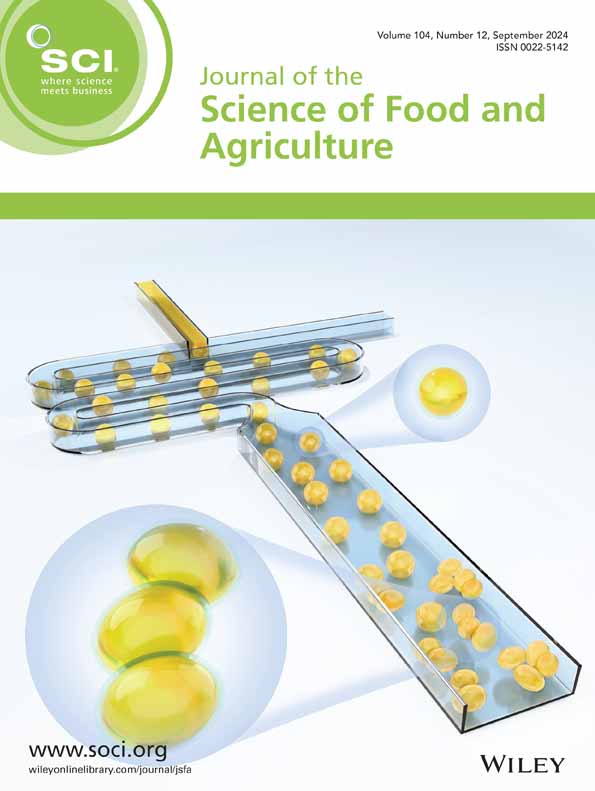求助PDF
{"title":"振动光谱学和数据分析对实现全球可持续发展目标的贡献。","authors":"Daniel Cozzolino, Louwrens C Hoffman","doi":"10.1002/jsfa.70206","DOIUrl":null,"url":null,"abstract":"<p><p>The United Nations Sustainable Development Goals (UN SDGs) were defined to improve the quality of life of the global population particularly regarding social and economic aspects, with a major focus on environmental sustainability. The incorporation of digital technologies into the agri-food sector has become a key enabler in increasing the efficiency, productivity, and sustainability of food production and processing systems. Digital technologies and innovations including artificial intelligence (AI), robotics, in-ground and remote sensors, connectivity, and internet of things (IoT) have been recognized as also being critical for the successful implementation of the UN SDGs. In particular, the utilization of sensing technologies (e.g., in-ground and remote sensors) has been shown to be of great importance to achieve these goals. The use of vibrational spectroscopy and data analytics have shown potential to contribute with the development and implementation of UN SDGs. An overview of the contribution of sensing technologies based on the utilization of vibrational spectroscopy (e.g., near- and mid-infrared spectroscopy, hyperspectral imaging) and data analytics to achieve the UN SDGs is provided. Advantages and limitations of these techniques are also discussed. The incorporation of technology will provide tools that can be used to monitor and predict the safety and quality of foods. Furthermore, digital technologies are enabling the development of novel decision-management systems along the food supply and value chain. Ultimately, the goal will be to assure the consumers the use of these technologies plays a key role in the applicability of the UN SDG. © 2025 The Author(s). Journal of the Science of Food and Agriculture published by John Wiley & Sons Ltd on behalf of Society of Chemical Industry.</p>","PeriodicalId":17725,"journal":{"name":"Journal of the Science of Food and Agriculture","volume":" ","pages":""},"PeriodicalIF":3.5000,"publicationDate":"2025-09-15","publicationTypes":"Journal Article","fieldsOfStudy":null,"isOpenAccess":false,"openAccessPdf":"","citationCount":"0","resultStr":"{\"title\":\"The contribution of vibrational spectroscopy and data analytics towards the achievement of the global sustainability goals.\",\"authors\":\"Daniel Cozzolino, Louwrens C Hoffman\",\"doi\":\"10.1002/jsfa.70206\",\"DOIUrl\":null,\"url\":null,\"abstract\":\"<p><p>The United Nations Sustainable Development Goals (UN SDGs) were defined to improve the quality of life of the global population particularly regarding social and economic aspects, with a major focus on environmental sustainability. The incorporation of digital technologies into the agri-food sector has become a key enabler in increasing the efficiency, productivity, and sustainability of food production and processing systems. Digital technologies and innovations including artificial intelligence (AI), robotics, in-ground and remote sensors, connectivity, and internet of things (IoT) have been recognized as also being critical for the successful implementation of the UN SDGs. In particular, the utilization of sensing technologies (e.g., in-ground and remote sensors) has been shown to be of great importance to achieve these goals. The use of vibrational spectroscopy and data analytics have shown potential to contribute with the development and implementation of UN SDGs. An overview of the contribution of sensing technologies based on the utilization of vibrational spectroscopy (e.g., near- and mid-infrared spectroscopy, hyperspectral imaging) and data analytics to achieve the UN SDGs is provided. Advantages and limitations of these techniques are also discussed. The incorporation of technology will provide tools that can be used to monitor and predict the safety and quality of foods. Furthermore, digital technologies are enabling the development of novel decision-management systems along the food supply and value chain. Ultimately, the goal will be to assure the consumers the use of these technologies plays a key role in the applicability of the UN SDG. © 2025 The Author(s). Journal of the Science of Food and Agriculture published by John Wiley & Sons Ltd on behalf of Society of Chemical Industry.</p>\",\"PeriodicalId\":17725,\"journal\":{\"name\":\"Journal of the Science of Food and Agriculture\",\"volume\":\" \",\"pages\":\"\"},\"PeriodicalIF\":3.5000,\"publicationDate\":\"2025-09-15\",\"publicationTypes\":\"Journal Article\",\"fieldsOfStudy\":null,\"isOpenAccess\":false,\"openAccessPdf\":\"\",\"citationCount\":\"0\",\"resultStr\":null,\"platform\":\"Semanticscholar\",\"paperid\":null,\"PeriodicalName\":\"Journal of the Science of Food and Agriculture\",\"FirstCategoryId\":\"97\",\"ListUrlMain\":\"https://doi.org/10.1002/jsfa.70206\",\"RegionNum\":2,\"RegionCategory\":\"农林科学\",\"ArticlePicture\":[],\"TitleCN\":null,\"AbstractTextCN\":null,\"PMCID\":null,\"EPubDate\":\"\",\"PubModel\":\"\",\"JCR\":\"Q1\",\"JCRName\":\"AGRICULTURE, MULTIDISCIPLINARY\",\"Score\":null,\"Total\":0}","platform":"Semanticscholar","paperid":null,"PeriodicalName":"Journal of the Science of Food and Agriculture","FirstCategoryId":"97","ListUrlMain":"https://doi.org/10.1002/jsfa.70206","RegionNum":2,"RegionCategory":"农林科学","ArticlePicture":[],"TitleCN":null,"AbstractTextCN":null,"PMCID":null,"EPubDate":"","PubModel":"","JCR":"Q1","JCRName":"AGRICULTURE, MULTIDISCIPLINARY","Score":null,"Total":0}
引用次数: 0
引用
批量引用

 求助内容:
求助内容: 应助结果提醒方式:
应助结果提醒方式:


